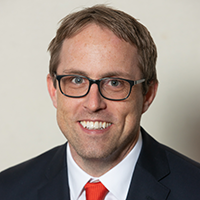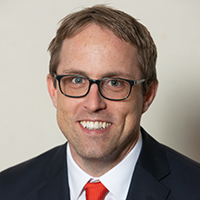
The New Crop of De Novo Banks
 This story describes the following:
This story describes the following:
- The FDIC has approved only five de novo bank applications since 2009.
- Regulators have helped fuel a recent uptick in de novo applications.
- High costs and weak investor interest are hurdles to bank formation.
When Blue Gate Bank opened its doors in Costa Mesa, California, on January 23, 2017, bankers across the country took note. It’s one of only five de novo bank applications to be approved by the Federal Deposit Insurance Corp. (FDIC) since 2009, and it’s the first new bank to open in California since the financial crisis.
Starting a new bank in the current environment is not an automatic path to riches, which is one reason why there have been so few of them in recent years. Interest rates remain oppressively low. Heightened oversight has ratcheted up compliance costs. And investors are wary of the amount of capital required to start a new bank nowadays, as well as the returns they expect to earn on that capital given the economic and regulatory landscapes.
Bankers and investors will therefore be watching Blue Gate closely to see whether it flourishes despite the many challenges it faces. The venture offers the tantalizing suggestion that the prospects for new banks may finally be improving, after eight years in which new bank formation had all but come to a halt. But Blue Gate’s ability to grow, appease regulators and navigate a course towards profitability will determine if other banks follow its lead.
The five de novo bank applications that the FDIC has approved since 2009 averages out to less than one a year and compares to an average of 154 annual approvals in the eight years leading up to the crisis. “When we went to the regulators in 2008, ’09, ’10, ’11 and said we wanted to form a new bank, they encouraged us to instead buy an existing charter in order to take troubled banks off their hands,” says Jeffrey Gerrish, a longtime lawyer and consultant to community banks.
This is why the industry and investors have taken note of late of what seems to be an incipient uptick in new bank formations. “I won’t call it a wave of new entrants to the space, but I’m aware of at least four investor groups that are looking to stand up new banks,” says C.K. Lee, a managing director in Piper Jaffray & Co.’s financial institutions group. Edward Carpenter is seeing the same thing from his vantage point as chairman and chief executive officer of Carpenter & Co., a California-based firm that advises and invests in new banks. “There’s both an uptick in filings that have become public information as well as a strong uptick in interest from investors,” says Carpenter.
Eight banks applied for FDIC insurance in 2016, two of which were approved while six applications are still pending. That’s hardly worth noting when you consider that over 200 banks filed applications with the FDIC in a typical year before the crisis. Yet the eight applications submitted last year represent a fourfold increase over 2015 and an eightfold increase over 2014.
The regulators, and the FDIC in particular, are helping to fuel this interest. “We would love to see new bank formations and applications,” says a high-level FDIC official. “Applications for de novo banks enrich [the federal banking] system, and the OCC is encouraged to see applications from bankers who recognize the value of being part of the federal banking system and are committed to meeting the high standards required of national banks and federal savings associations,” concurs a spokesman for the Office of the Comptroller of the Currency.
Last April, the FDIC reduced the period of heightened regulatory scrutiny for de novo banks from seven years down to three years, where it had been prior to 2009. This is a huge development, says Chris Walsh, chief banking officer of Blue Gate Bank. During the de novo period, a bank has little room to deviate from its initial business plan and is subject to a 12-month regulatory inspection cycle as opposed to the usual 18-month cycle. “The change is a very proactive and positive thing for the industry,” says William Stone, CEO of Bedford, New Hampshire-based Primary Bank, which in July 2015 became the first de novo bank to open in the Granite State in over seven years and only the second new commercial bank in the country to set up shop since 2010.
The FDIC is also hosting conferences around the country to demystify the application process for de novo banks. It held events last year in New York City, San Francisco and Atlanta, and has three scheduled for this year in Dallas, Chicago and Kansas City. In December, moreover, the FDIC began soliciting feedback on a handbook developed to facilitate the process of establishing new banks. “This handbook is the latest in a series of steps we have taken to support the establishment of de novo institutions,” said FDIC Chairman Martin Gruenberg in prepared remarks at the time. “Our goal is to increase transparency about the application approval process and resources available to assist potential organizers.”
Bankers have found the FDIC true to its word, especially the staff in its regional offices. “I give the FDIC a lot of credit; I think they’ve done a very good job of reevaluating their position on de novos and having an open mind,” says Donald Musso, CEO of FinPro Inc., a New Jersey-based consulting firm that’s marshalled hundreds of de novo banks through the application process, including Primary Bank in New Hampshire. Walsh agrees, saying that “the west coast FDIC has been very supportive of us getting approved and open.” Stone echoed this sentiment, finding the FDIC to be “very cooperative and encouraging in the process.”
A not uncommon complaint, however, is that the FDIC’s central staff hasn’t been equally receptive. “They tend to be so concerned about making errors in judgment that if the filing doesn’t fit perfectly within a box, then nobody wants to go out on a limb,” says Gary Findley, a veteran California lawyer and consultant who’s helped more than 200 banks get started since 1967, including Blue Gate Bank.
On top of the regulatory outreach, a number of additional factors are coalescing to draw bankers and investors into the de novo space. Interest rates continue to pressure lending margins, but they’re inching up. The Federal Reserve increased short-term rates three times over the past year and a half by a total of 75 basis points, and long-term rates rose after the presidential election, the unexpected outcome of which also suggests that the regulatory burden on banks could soon abate. The rapid rise in bank stocks since the election is similarly tilting the math in favor of establishing a de novo bank over buying or injecting capital into an existing one.
But while Blue Gate Bank and other de novos may open the proverbial floodgates for applications, Findley doesn’t believe that much water has accumulated behind the dam. The dearth of interest traces first and foremost to the amount of capital it takes to start a bank nowadays. “The initial capital required to own a bank has gone up in every cycle since the 1970s,” says Carpenter. “And this time the capital requirements haven’t been raised on paper, but it is encouraged by regulators that there be enough capital to do all things, including increased compliance.”
It’s generally believed that $15 million is the minimum threshold to start a bank in the post-crisis world, though recent de novo banks have raised twice that amount. Blue Gate Bank raised $30 million, most of which came from the Gallaher family, which also has a major stake in First Community Bank in Santa Rosa, California. Primary Bank raised roughly the same amount from 421 community members in and around Bedford, New Hampshire. And while one of the earliest de novo banks to open since the crisis, Lakeside Bank in Lake Charles, Louisiana, initially raised only $12 million before its 2010 opening, it raised an additional $9.6 million two years later.
“The reason it takes more capital is because there were so many de novo banks chartered before the crisis that ended up failing,” says Tom Brown, founder and CEO of Second Curve Capital, a hedge fund that invests in banks. New banks failed at twice the rate of established banks, notes an FDIC official. The higher amount also enables a bank to grow to a size of relevance-$250 million or more in assets, say industry insiders-without having to raise capital again until after the 18 to 24 month start-up period during which most banks lose money. This size also enables the bank to have a higher legal lending limit that’s competitive with existing banks, which is what informed Blue Gate Bank’s $30 million target, says William Gallaher, chairman of the board of First Community Bank and the majority owner of Blue Gate Bank.
But it’s a de novo bank’s three-year business plan submitted to the FDIC as a part of its application for deposit insurance that ultimately dictates how much capital is needed. The FDIC requires new banks to have an 8 percent tier 1 capital ratio at the end of three years. This hasn’t changed from before the crisis, says an FDIC official, but the difference today is that compliance costs are higher coupled with the fact that it’s now more expensive to staff and equip a bank than it was a decade ago, all of which combine to eat up more capital than previously in the initial years of operation.
“This is a good change, by the way,” says Musso. “You should have to have enough capital to meet your business plan for the first three years. You do not want to have to go to the market to raise capital before then, because you’re probably not making any money and would have to issue stock at a discount to book value, diluting existing shareholders.”
Beyond the amount of capital it takes to open a bank, investors have also been deterred by a lower expected return on that capital. “If you have to put in $20 million to $25 million into a bank on day one in this low interest rate, highly regulated environment, I can’t pencil out the numbers that show a decent rate of return over a five-year period,” says Brown.
Interest rates are a culprit because of their impact on lending margins, but higher compliance costs are no less important. “We believe that the increased regulatory burden translates into a 30 to 40 basis point decrease in a typical community bank’s return on average assets as a result of additional report systems, controls, audits, all the stuff you have to have in place,” says Findley. A well-run community bank could earn 1.3 percent or more on its assets a decade ago, whereas the same bank today is lucky to earn 1 percent on its assets.
There are other concerns that weigh on the expected return from a de novo bank. Just like it costs more to operate a bank nowadays, some have found that it also costs more to go through the formation process. “The application was on steroids,” Findley told The Wall Street Journal last year. “Back 10 to 15 years ago, the application itself, and the whole business plan, was maybe 200 to 250 pages. Blue Gate Bank’s application was over 2,000 pages.” On top of this, Brown believes that the rapid proliferation of fintech companies lowers the “terminal value” of a de novo bank, which is the valuation multiple that a young bank can expect to attract from prospective acquirers five to 10 years into its lifecycle.
“Many investors are finding that the regulatory barriers are so high and so uncertain that it’s just not worth the time and expense of going through the process of filing a de novo application and building a bank from scratch,” says Lee. “They’ve found it easier to go and buy an existing charter or take their team and partner up with an existing institution.”
By and large, institutional investors with shorter investment horizons are staying on the sidelines. “A lot of banks were started before the financial crisis with the thought that they’d be run for five years or so and then sold, with investors making the majority of their money on the multiples inflation,” says Musso. “The de novos we’re seeing today are being started for a real business purpose or by a management team that wants to run the bank for the foreseeable future.” Findley agrees, adding that “if you’re looking for a short-term return on investment, you shouldn’t be in the de novo business.”
The de novo banks formed since the financial crisis confirm this. Lakeside Bank and Primary Bank are backed by community members who have vested and long-term interests in locally owned banks. “Our investors wanted to see a bank that was locally owned and locally operated that would keep money in the community,” says Lakeside Bank CEO Morgan “Mike” Harmison. The same reasoning was behind Bank of Bird-in-Hand, which opened in Pennsylvania’s Amish country in 2013. “There was, still is, a pent-up demand for a local bank,” the bank’s chief loan officer, William O’Brien, told The Wall Street Journal in 2015.
Blue Gate Bank, which is backed by a small group of experienced and well capitalized operators, cites an identical long-term, community-based rationale for its formation. “I’ve been in the banking business for 35 years and know a lot of small and mid-sized businesses in Orange County need community banks,” says Walsh. “The big banks hire recent graduates right out of school that are smart, but they don’t have business backgrounds. A lot of community banks, by contrast, have relationship managers and CEOs who are older, have ridden through economic turns with our clients, and understand the needs of small to mid-sized clients.”
Ultimately, a drop-off and then recovery in new bank formations is to be expected following a recession. “A period of consolidation is often followed by a period of new bank formation,” says Gerrish. “I think that’s what we’re beginning to see.” The current cycle has just taken longer to turn because of the depth of the financial crisis. “This is not typical of the cycles we’ve seen since we started doing this in 1974,” says Carpenter. “The recovery in new bank formations is taking about 18 months longer than the typical cycle.”
Higher rates will help this, as will a less onerous regulatory environment and further consolidation, all of which will make investors feel more confident about the prospects of starting a bank. But the initial catalyst has already occurred, says Carpenter: “When bank stocks from big on down are doing well, that’s the trickle effect that creates interest across the board.”

Join OUr Community
Bank Director’s annual Bank Services Membership Program combines Bank Director’s extensive online library of director training materials, conferences, our quarterly publication, and access to FinXTech Connect.
Become a Member
Our commitment to those leaders who believe a strong board makes a strong bank never wavers.



